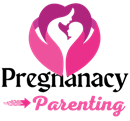Navigating Your Third Trimester: A Comprehensive Guide
This detailed guide should help expectant mothers navigate the third trimester with confidence, ensuring both their well-being and that of their developing baby as they prepare for the big day.
The third trimester of pregnancy is an exciting and sometimes overwhelming time. As you approach the final stretch of your pregnancy, the anticipation of meeting your baby grows, along with your belly. This trimester, which spans from week 28 until your baby is born, is a period of rapid growth for your baby and significant physical and emotional changes for you. This guide will help you navigate the third trimester, covering everything from developmental milestones and symptoms to doctor’s appointments, FAQs, and important preparations.
What is the Third Trimester?
The third trimester begins at week 28 and lasts until the birth of your baby, typically around week 40. This period can be both thrilling and challenging as you prepare for childbirth and parenthood. Your baby is growing rapidly, and your body is making final preparations for labor and delivery. It’s a time to focus on your health, your baby’s development, and the upcoming transition to parenthood.
Developmental Milestones in the Third Trimester
During the third trimester, your baby undergoes significant development in preparation for life outside the womb. Here’s a week-by-week overview of what’s happening:
Weeks 28-31: Rapid Brain Growth and Maturity
- Week 28: Your baby is about the size of an eggplant, weighing around 2 1/4 pounds. The brain is developing rapidly, with deep grooves forming on its surface. The lungs are still maturing, and your baby begins to practice breathing by inhaling and exhaling small amounts of amniotic fluid.
- Week 29: The baby’s muscles and lungs are continuing to mature, and the head is growing to accommodate the developing brain. The eyes can respond to light, and your baby may start to move more frequently.
- Week 30: Your baby’s eyesight is improving, and the brain is regulating body temperature. The bone marrow is now fully responsible for producing red blood cells, and the baby continues to gain weight, with fat being added to the body.
- Week 31: The baby’s brain is developing trillions of connections, making this a crucial time for cognitive growth. The baby’s movements may feel more pronounced as it becomes more cramped in the uterus.
Weeks 32-35: Gaining Weight and Building Immunity
- Week 32: The baby is around 4 pounds and 17 inches long. The skeleton is fully developed, but the bones are still soft and flexible. The digestive system is almost fully mature, and the baby is practicing sucking and swallowing in preparation for feeding.
- Week 33: The baby’s immune system is developing, and antibodies are being passed from you to your baby to provide protection after birth. The baby’s skin is becoming less translucent as fat continues to build up beneath the surface.
- Week 34: Your baby is now the size of a cantaloupe and weighs about 5 1/2 pounds. The lungs are nearly fully developed, and the baby continues to gain about half a pound each week. If born at this stage, the baby would likely survive without intensive medical intervention.
- Week 35: The baby’s kidneys are fully developed, and the liver is beginning to process some waste products. Most of the baby’s basic physical development is complete, and the focus now shifts to gaining weight and building a layer of fat to help regulate body temperature after birth.
Weeks 36-40: Final Preparations for Birth
- Week 36: The baby is around 6 pounds and may be about 18-19 inches long. The baby’s head might start to move down into the pelvis, a process known as “lightening” or “engagement,” which can make breathing easier for you but may increase pressure on your bladder.
- Week 37: Your baby is considered “early term” at this point. The lungs are fully mature, and the baby is continuing to gain weight. The baby’s movements may slow down as there’s less space to move, but you should still feel regular activity.
- Week 38: The baby is now practicing breathing by inhaling amniotic fluid, which helps develop the lungs. The brain and nervous system are still maturing, and the baby’s grasp is firm. The baby is also building a layer of fat that will help maintain body temperature outside the womb.
- Week 39: Your baby is considered full term. The skin is smooth, and the body is plump. The baby’s organs are fully developed, and the baby is ready for life outside the womb. Your baby’s head may be engaged in your pelvis, getting ready for birth.
- Week 40: If you reach week 40, your baby is fully developed and ready for delivery. The baby is around 7 to 8 pounds and 19 to 21 inches long. If you haven’t gone into labor yet, don’t worry—many women deliver after their due date, and your healthcare provider will monitor you closely.
What You Should Be Doing During the Third Trimester
The third trimester is all about preparing for childbirth and ensuring you and your baby are as healthy as possible. Here are some important steps to take during this time:
1. Continue Regular Prenatal Care
As you approach the end of your pregnancy, your prenatal visits will become more frequent, typically every two weeks until week 36, and then weekly until delivery. These appointments are crucial for monitoring your baby’s growth, checking your blood pressure, and discussing any concerns you might have.
- Monitor Blood Pressure: Your healthcare provider will keep a close eye on your blood pressure to screen for preeclampsia, a condition characterized by high blood pressure and potential damage to other organs.
- Measure Fundal Height: The fundal height (the distance from the pubic bone to the top of the uterus) will be measured to assess your baby’s growth.
- Check Baby’s Position: Your provider will check the baby’s position to determine whether it’s head-down (cephalic position), which is ideal for delivery.
- Discuss Birth Plan: Use these appointments to discuss your birth plan, including pain management preferences, labor positions, and any concerns you may have about the delivery process.
2. Prepare for Labor and Delivery
As your due date approaches, it’s important to prepare for labor and delivery. Here are some steps to take:
- Create a Birth Plan: A birth plan outlines your preferences for labor and delivery, including pain relief options, who you want in the delivery room, and any specific requests for after the birth. While it’s important to be flexible, having a plan can help you feel more prepared and in control.
- Pack Your Hospital Bag: Around week 36, pack a hospital bag with essentials such as comfortable clothing, toiletries, snacks, baby clothes, and any important documents. Don’t forget items like a camera, phone charger, and birth plan.
- Practice Relaxation Techniques: Consider taking a childbirth class that teaches breathing exercises, relaxation techniques, and labor positions. Practicing these techniques can help you manage pain and stress during labor.
- Install the Car Seat: Ensure your baby’s car seat is installed correctly in your vehicle. Many hospitals won’t let you leave with your newborn unless they confirm you have a properly installed car seat.
3. Maintain a Healthy Diet and Stay Hydrated
As your baby continues to grow, maintaining a healthy diet is more important than ever. Focus on nutrient-rich foods that support your baby’s development and provide you with the energy you need.
- Protein: Essential for your baby’s growth and helps with the development of tissues and organs.
- Iron: Supports the increased blood volume during pregnancy and helps prevent anemia.
- Calcium: Important for your baby’s bone development.
- Fiber: Helps prevent constipation, a common issue in the third trimester.
- Hydration: Drink plenty of water to stay hydrated, which can help prevent common issues like swelling, constipation, and urinary tract infections.
4. Stay Active with Safe Exercises
Regular exercise during the third trimester can help you stay healthy, manage weight gain, and prepare your body for labor. However, it’s important to choose exercises that are safe and comfortable as your body changes.
- Walking: A low-impact exercise that keeps you active without putting too much strain on your joints.
- Swimming: Provides relief from joint pain and swelling while offering a full-body workout.
- Prenatal Yoga: Helps improve flexibility, reduce stress, and strengthen muscles that will be used during labor.
Always consult your healthcare provider before continuing or starting any exercise routine in the third trimester to ensure it’s safe for you and your baby.
5. Get Plenty of Rest
As your due date approaches, you may find it more difficult to get comfortable and sleep well. Fatigue is common in the third trimester due to the physical demands of carrying extra weight and the anticipation of childbirth.
- Sleep on Your Side: Sleeping on your left side is recommended as it improves circulation and reduces pressure on your organs.
- Use Pillows for Support: Place pillows under your belly, between your knees, and behind your back for extra comfort.
- Take Naps: If nighttime sleep is elusive, try to rest during the day. Short naps can help you recharge.
Common Symptoms During the Third Trimester
While the third trimester is often filled with excitement, it can also bring a variety of physical symptoms as your body prepares for childbirth. Here are some common symptoms and tips for managing them:
1. Braxton Hicks Contractions
Braxton Hicks contractions, also known as “practice contractions,” are irregular and usually painless. They help your body prepare for labor by toning the muscles of the uterus.
- How to Manage: Braxton Hicks contractions are usually nothing to worry about. Resting, drinking water, or changing positions can help them subside. If they become regular or painful, contact your healthcare provider, as it could be a sign of preterm labor.
2. Shortness of Breath
As your baby grows, your uterus can push up against your diaphragm, making it harder to breathe deeply.
- How to Manage: Practice good posture to give your lungs more room to expand. Sleep with your upper body slightly elevated using pillows, and avoid large meals that can add pressure to your diaphragm.
3. Swelling (Edema)
Swelling in the feet, ankles, and hands is common in the third trimester due to increased fluid retention and pressure from the growing uterus.
- How to Manage: Elevate your feet when resting, stay hydrated, and avoid standing for long periods. Wearing supportive shoes and avoiding tight clothing can also help reduce swelling.
4. Heartburn and Indigestion
Heartburn can worsen in the third trimester as the growing baby puts pressure on your stomach, pushing stomach acid into the esophagus.
- How to Manage: Eat smaller, more frequent meals, avoid spicy or fatty foods, and don’t lie down immediately after eating. Sleeping with your head elevated can also help reduce symptoms.
5. Frequent Urination
As your baby drops lower into your pelvis, it can put pressure on your bladder, leading to more frequent trips to the bathroom.
- How to Manage: Drink plenty of water throughout the day but reduce fluids in the evening to minimize nighttime trips to the bathroom. Lean forward when urinating to ensure your bladder is fully emptied.
6. Back Pain
The extra weight of your baby, along with changes in your posture and the loosening of ligaments in preparation for childbirth, can lead to back pain.
- How to Manage: Practice good posture, wear supportive shoes, and consider using a maternity belt for extra support. Prenatal yoga and gentle stretching can also help alleviate discomfort.
Doctor’s Appointments During the Third Trimester
Regular prenatal care is essential during the third trimester to monitor your baby’s growth and your health as you approach delivery. Here’s what to expect during these appointments:
Routine Checkups
- Weight and Blood Pressure: Your healthcare provider will continue to monitor your weight gain and blood pressure to ensure they’re within a healthy range.
- Fundal Height Measurement: This measurement checks the size of your uterus to assess your baby’s growth.
- Fetal Heartbeat: Your provider will listen to your baby’s heartbeat, which should remain strong and steady.
- Baby’s Position: Your provider will check the position of your baby to determine if they’re head-down and ready for birth.
Group B Strep Test (Week 35-37)
Around weeks 35-37, you’ll be tested for Group B Streptococcus (GBS), a type of bacteria that can be passed to the baby during delivery. If you test positive, you’ll receive antibiotics during labor to reduce the risk of passing the infection to your baby.
Labor and Delivery Planning
As your due date approaches, your healthcare provider will discuss signs of labor, when to go to the hospital, and what to expect during delivery. This is also the time to ask any final questions and review your birth plan.
Frequently Asked Questions (FAQs) About the Third Trimester
1. What are the signs of labor?
Common signs of labor include:
- Regular contractions: Unlike Braxton Hicks contractions, labor contractions occur at regular intervals and become stronger and closer together over time.
- Water breaking: This is when the amniotic sac ruptures, and fluid leaks from your vagina. It can be a gush or a steady trickle.
- Bloody show: A pink or brown discharge may indicate that the cervix is beginning to dilate.
- Back pain: Persistent lower back pain, often accompanied by cramping, can be a sign of labor.
If you experience any of these symptoms, contact your healthcare provider or head to the hospital.
2. How can I tell the difference between Braxton Hicks contractions and real labor?
Braxton Hicks contractions are usually irregular, painless, and do not increase in intensity or frequency. Real labor contractions, on the other hand, are regular, increase in strength, and come closer together over time. If you’re unsure, contact your healthcare provider.
3. Is it safe to travel during the third trimester?
It’s generally safe to travel during the early part of the third trimester, but it’s important to consult your healthcare provider before making any travel plans. After 36 weeks, many healthcare providers recommend staying close to home, as you could go into labor at any time. If you do travel, make sure to have your prenatal records with you and know the location of nearby medical facilities.
4. What should I do if I notice decreased fetal movement?
It’s important to monitor your baby’s movements during the third trimester. If you notice a significant decrease in movement, perform a kick count by lying on your side and counting how many times your baby moves within two hours. If you count fewer than 10 movements, or if you’re concerned about decreased movement, contact your healthcare provider immediately.
5. How can I prepare my home for the baby’s arrival?
As your due date approaches, consider preparing your home by:
- Setting up the nursery: Ensure the crib, changing table, and other baby essentials are ready.
- Stocking up on supplies: Have plenty of diapers, wipes, and baby clothes on hand.
- Installing the car seat: Make sure your car seat is properly installed and ready for the ride home from the hospital.
- Preparing freezer meals: Cooking and freezing meals ahead of time can help reduce stress and workload during the first few weeks postpartum.
Final Thoughts
The third trimester is an exciting time filled with anticipation, preparation, and some challenges. As you approach the end of your pregnancy, it’s important to take care of yourself, stay informed, and prepare for the arrival of your baby. Regular prenatal care, healthy habits, and open communication with your healthcare provider are key to ensuring a smooth and safe transition into parenthood.
This guide provides a comprehensive overview of what to expect during the third trimester, helping you feel prepared and confident as you near the end of your pregnancy journey. Remember to listen to your body, trust your instincts, and reach out for support when needed. You’re almost there—soon you’ll be holding your precious baby in your arms!






